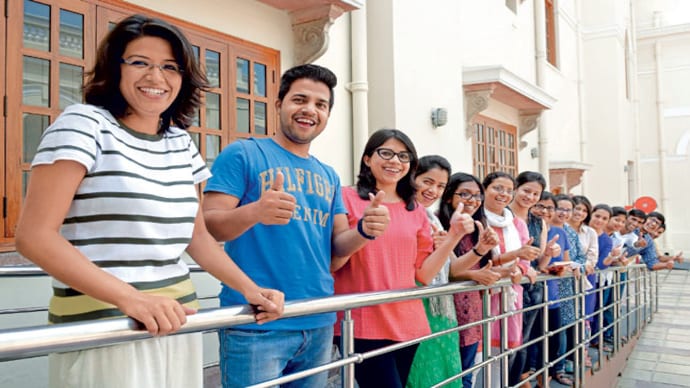Indian universities must focus on research and innovation to compete with their global counterparts
The country also has nearly 700 universities, but sadly, there has been little focus on original research works, innovation and breakthroughs in science.

In terms of ranking, this year's India Today Group-Nielsen survey of India's best universities hardly throws up any surprises. While University of Delhi (DU) stays comfortably placed at the top for the third consecutive year, University of Kerala takes a remarkable leap-it has jumped 17 positions to rank ninth this year. In 2014, it was placed at number 26. Kurukshetra University has also moved five ranks to occupy the 10th position while Aligarh Muslim University (AMU) has been showing consistent improvement over the years, ranking fourth this time. The Vice Chancellor of AMU, Zameeruddin Shah, has already vowed to grab the top position by 2017. He has an even bigger dream-to be among the top 200 universities in the world by 2020.

The significance of this dream can be understood from the fact that not a single Indian university could make it to the list of top 200 universities that are a part of the Times Higher Education World University Rankings. While there are nine Indian universities among the top 100 Asian universities, none of them could find a place among the top 10. Among the top 100 Asian universities, China leads with 21, Japan has 19 and South Korea has 13. Japan, Hong Kong, and South Korea have three universities each in the Asian top-20 list along with two Chinese universities.
These results have come as a shock to Indian universities. Especially so when you consider the findings by Ernst & Young: with nearly 140 million people belonging to the college-going age group, one in every four graduates in the world will be a product of the Indian higher education system. India has one of the largest higher education systems in the world and ranks second in terms of student enrolment. India's higher education sector has seen huge expansion in recent times-by 2011, the country was home to more than 35,500 colleges while a decade earlier, the figure stood at 12,800.

The country also has nearly 700 universities, but sadly, there has been little focus on original research works, innovation and breakthroughs in science. These have been highlighted in a recent speech by President Pranab Mukherjee, who also happens to be the Visitor of central universities. "Unless we focus on research, it is not possible to improve the quality of education," he said. As many experts involved with the Times ranking point out, Indian universities fare badly in this survey because they give merely 30 per cent weightage to research work.
Contrast this with the global superpower US which is the home to the best universities in the world. They are ideal platforms for the exchange of ideas and information and for conducting collaborative research and development work with several partnering nations and institutions around the world.

In India, the problem also lies with the regulatory architecture of the government. As former human resource development (MoS) minister Shashi Tharoor points out, our regulatory institutions are stifling academic advancement rather than promoting it. "Our higher education is over-regulated and under-governed, with the University Grants Commission (UGC), the Medical Council of India, and the All India Council for Technical Education issuing one-size-fits-all directives to prospective universities about the size of their buildings, the number of classrooms and teachers they should have and what they should teach," Tharoor says. Ashish Dhawan, one of the trustees of Ashoka University, Sonipat, believes that the misplaced focus of regulatory authorities contributes towards the poor state of affairs in Indian universities. "The National Assessment and Accreditation Council (NAAC) should be strengthened and there should be increasing focus on student learning outcomes," he says.

Another worrying fact is that our educational institutes have failed to churn out employable students. According to the India Skill Report (ISR), compiled by Wheebox, PeopleStrong, LinkedIn and the Confederation of Indian Industry (CII) in 2014, only 37 per cent of Indian graduates are employable. "We must move out of classrooms and students must be given hands-on training and must be encouraged to innovate," says DU Vice Chancellor Dinesh Singh.
While the government remains the biggest spender in the education sector, India's spending on higher education, at 1.22 per cent of the GDP, is quite low compared to the US's 3.1 per cent. But if Budget 2015-16 is any indication, the government is focussing more on this grey area. Though the overall education budget has seen a reduction of 2 per cent, higher education has been given a plan allocation of Rs 158,555.26 crore in 2015-16, as against Rs 130,000 crore in 2014-15, an increase of nearly 22 per cent.

The economic boom has seen the emergence of a large number of private universities. As Dhawan says, these institutes are breaking conventional paradigms and offering unique courses. But some scepticism remains as academicians point out that in India, private universities focus on making more money than on quality of education. At a time when nearly 60 per cent of college-going students in the country are enrolled in private institutions, the government must ensure that strict quality control measures are in place.
Follow the writer on Twitter @KDscibe
